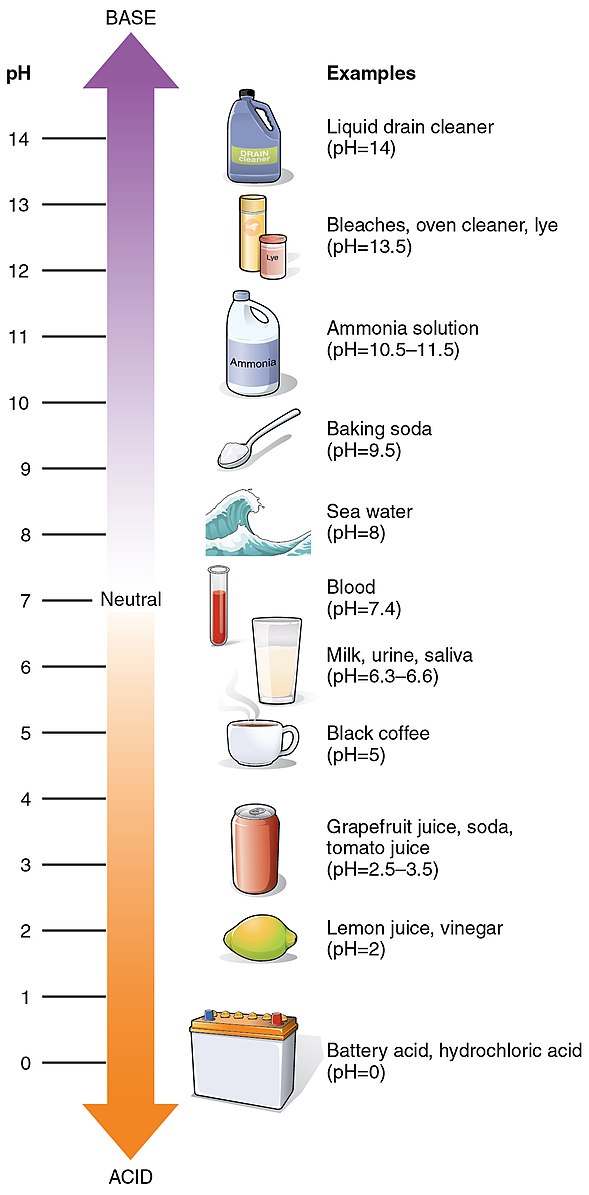The pH of a 0.10 M solution of barium hydroxide, Ba(OH)2, is 13.30. This is because barium hydroxide is a strong base, which means it completely dissociates in water, releasing two hydroxide ions (OH-) for every barium hydroxide molecule. This results in a high concentration of hydroxide ions, which increases the pH of the solution.
Understanding the pH of Barium Hydroxide in Water
Barium hydroxide, also known as baryta, is a strong base that readily dissolves in water, producing a highly alkaline solution. The pH of a barium hydroxide solution is determined by the concentration of hydroxide ions (OH-) in the solution.
When barium hydroxide is dissolved in water, it dissociates according to the following reaction:
Ba(OH)2 → Ba2+ + 2OH-
This reaction shows that for every molecule of barium hydroxide that dissociates, two hydroxide ions are produced. The high concentration of hydroxide ions in the solution leads to a high pH, typically around 13.30 for a 0.10 M solution.
The pH of a barium hydroxide solution can be calculated using the following formula:
pH = 14 + log[OH-]
Where [OH-] is the concentration of hydroxide ions in the solution.
For a 0.10 M solution of barium hydroxide, the concentration of hydroxide ions is 0.20 M (2 × 0.10 M), and the pH can be calculated as follows:
pH = 14 + log(0.20)
pH = 14 + (-0.70)
pH = 13.30
Balancing the pH of Barium Hydroxide Solutions
 Image source: OpenStax College
Image source: OpenStax College
To balance the pH of a barium hydroxide solution, you can add a strong acid, such as hydrochloric acid (HCl), to neutralize the hydroxide ions. The reaction between barium hydroxide and hydrochloric acid produces barium chloride (BaCl2) and water (H2O):
Ba(OH)2 + 2HCl → BaCl2 + 2H2O
The amount of acid needed to balance the pH will depend on the concentration and volume of the barium hydroxide solution. It is important to add the acid slowly and carefully, as the reaction can be exothermic and produce heat.
Contaminants and Impurities in Barium Hydroxide Solutions
Contaminants or impurities in a barium hydroxide solution can affect its pH. For example, if the solution contains carbonate ions (CO32-), the pH will be higher than expected due to the formation of barium carbonate (BaCO3), which is basic. To remove carbonate ions, you can add a strong acid, such as hydrochloric acid, to precipitate them as barium chloride and carbon dioxide (CO2):
Ba(OH)2 + CO2 → BaCO3 + H2O
BaCO3 + 2HCl → BaCl2 + CO2 + H2O
Other impurities, such as heavy metals or organic matter, can also affect the pH of a barium hydroxide solution. It is important to ensure that the solution is free of contaminants before using it.
Safety Considerations when Handling Barium Hydroxide Solutions
When handling barium hydroxide solutions, it is important to use appropriate safety precautions. Barium hydroxide is a corrosive substance and can cause burns or eye damage if it comes into contact with the skin or eyes. It can also react violently with acids, producing heat and toxic fumes.
To handle barium hydroxide solutions safely, you should:
- Wear appropriate personal protective equipment (PPE), such as gloves, goggles, and a lab coat.
- Work in a well-ventilated area to avoid inhaling any fumes.
- Avoid mixing barium hydroxide with acids or other chemicals, as this can produce hazardous reactions.
- Properly dispose of any waste or contaminated materials according to local regulations.
Conclusion
The pH of a barium hydroxide solution is typically around 13.30 for a 0.10 M solution. This is due to the complete dissociation of barium hydroxide in water, which results in a high concentration of hydroxide ions. To balance the pH, you can add a strong acid, such as hydrochloric acid, and remove any contaminants or impurities that may affect the pH. When handling barium hydroxide solutions, it is important to use appropriate safety precautions to avoid injury or exposure to hazardous substances.
References:
– Socratic.org, “What is the pH of a 0.10 M solution of barium hydroxide, Ba(OH)2?”, 2016.
– YouTube, “What is the pH of 0.1 mol/L Ba(OH)2 – YouTube”, 2020.
– Everettsd.org, “pH [H+] pOH [OH–] Acidic, basic, or neutral?”, 2013.
